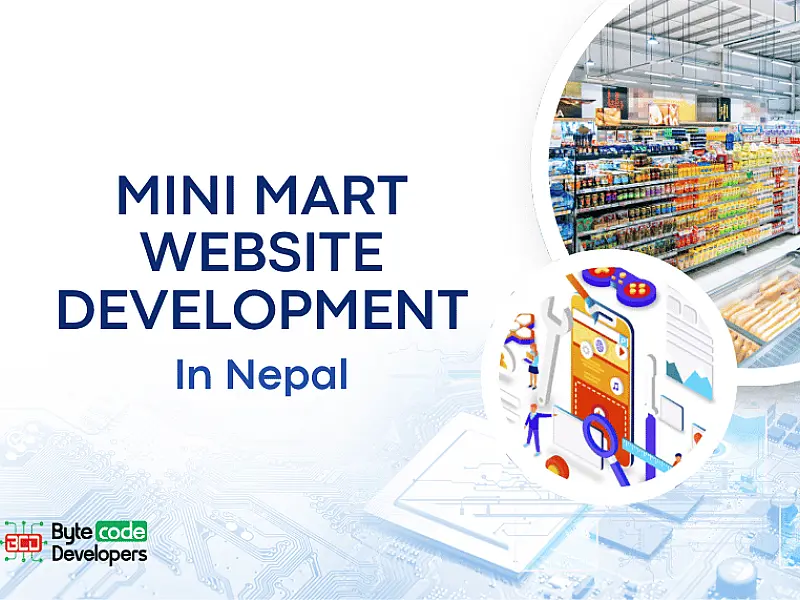
Table of Contents
Why Mini Marts in Nepal Need an Online Platform
As online shopping becomes the norm, even small retailers in Nepal must adapt. A dedicated mini mart website allows businesses to:
- Sell directly to customers 24/7
- Offer home delivery services
- Accept mobile payments via eSewa, Khalti, or FonePay
- Track orders, customers, and stock in real time
- Compete with big platforms like Daraz or SastoDeal
If you are not online, you're leaving money on the table especially in urban markets like Kathmandu, Pokhara, and Biratnagar.
Essential Features for a Mini Mart Website
| Feature | Why It Matters |
|---|---|
| Product catalog with search & filters | Helps users find what they need |
| Online checkout system | Convenience + conversion |
| Delivery tracking | Enhances customer trust |
| Push notifications (mobile/PWA) | Re-engage buyers with offers |
| Inventory control dashboard | Automate stock updates |
| WhatsApp/phone order support | Local-friendly interaction |
| High-quality product images | Essential for trust and clarity |
| Cash-on-delivery support | Still popular in Nepal |
Choosing the Right Platform (WordPress, Shopify, Laravel)
| Platform | Pros | Ideal For |
|---|---|---|
| WordPress + WooCommerce | Budget-friendly, plugins available | Small to medium stores |
| Shopify | Easy to set up, modern UI | Urban-focused grocery chains |
| Laravel + Vue/React | Full customization | Multi-location or advanced needs |
| Magento | Enterprise-level, robust | Large grocery networks |
| SaaS Builders (e.g., Dukaan, StoreHippo) | Quick launch | Micro-vendors or local mart |
Online Ordering and Inventory Management
Running a smooth operation requires strong backend systems. You’ll need:
- Order management dashboard
- Stock level alerts
- Product SKU system
- Real-time updates across POS and website
- Daily sales reporting
For smaller stores, plugins like WooCommerce Stock Manager or tools like Zoho Inventory work well.
Mobile Optimization & User Experience
Since most users in Nepal shop via smartphone, mobile-first design is non-negotiable.
- Large “Add to Cart” buttons
- Easy scrolling and filters
- Optimized load times (use WebP images)
- Click-to-call and WhatsApp ordering
- Offline access via Progressive Web App (PWA)
SEO and Local Marketing for Grocery Sites
- Optimize for “mini mart near me”, “online grocery [city]”
- Link your Google Business Profile
- Create blogs on healthy living, cooking tips, local produce
- Use schema markup for product listings
- Promote on Facebook, TikTok, and Instagram with boosted posts
Delivery System Integration & Order Tracking
Even with limited resources, you can offer smart logistics:
- Manual delivery scheduling for same-day service
- Integrate with Deliveree Nepal or Upaya
- Customer order tracking via SMS or dashboard
- Cash-on-delivery + digital receipt system
Logistics is the heart of e-commerce success.
Cost of Developing a Mini Mart Website in Nepal
| Item | Estimated Cost (NPR) |
|---|---|
| Domain + Hosting | 3,000 – 10,000/year |
| WordPress Setup + WooCommerce | 15,000 – 50,000 |
| Custom Laravel Development | 50,000 – 2,50,000 |
| Payment Integration | 5,000 – 15,000 |
| Delivery System Add-on | 10,000 – 25,000 |
| Annual Maintenance | 10,000 – 30,000 |
For startups, you can go live with as little as NPR 20,000.
Payment Gateway Integration for Nepali Customers
Local Payment Options:
- eSewa
- Khalti
- FonePay
International:
- Stripe or PayPal for diaspora clients
- Cash on Delivery (COD) toggle during checkout
- Make checkout as local and seamless as possible.
Tips to Maximize Online Sales
- Use social media ads (target by location)
- Bundle offers (e.g., “Weekly Family Pack”)
- Launch loyalty points or repeat order discounts
- Email/SMS deals for registered users
- Retarget Facebook/Google ad traffic
- Feature real customers and testimonials
Maintenance and Security for E-commerce Sites
- SSL certificate is a must (secure checkout)
- Daily backups
- Protect admin panel access
- Monitor suspicious orders or spam
- Monthly updates to plugins and CMS
Conclusion
Mini mart website development in Nepal opens the door to a new stream of revenue, wider customer reach, and tech-enabled efficiency. Whether you're a local store or an ambitious grocer wanting to scale, going online is your next smart move.
Focus on speed, simplicity, and service and your digital mini mart can thrive in Nepal’s evolving retail landscape.




 March 26, 2025
March 26, 2025

-thumb.webp)











